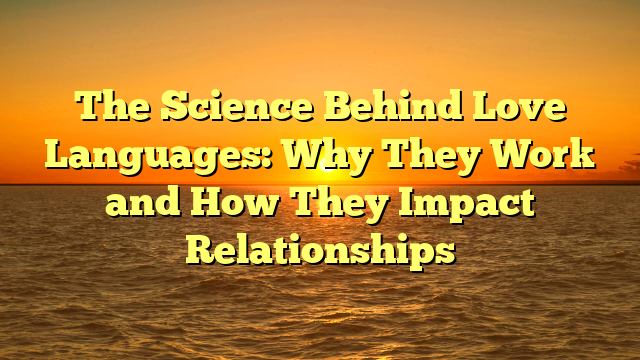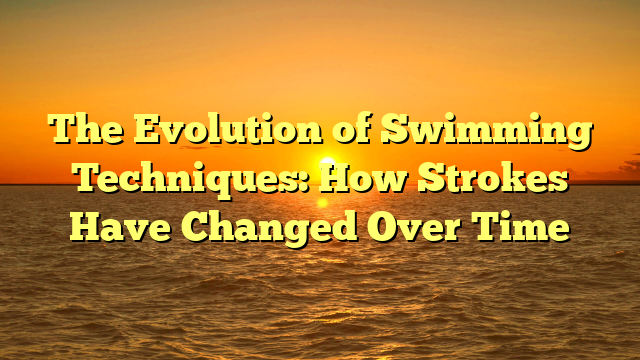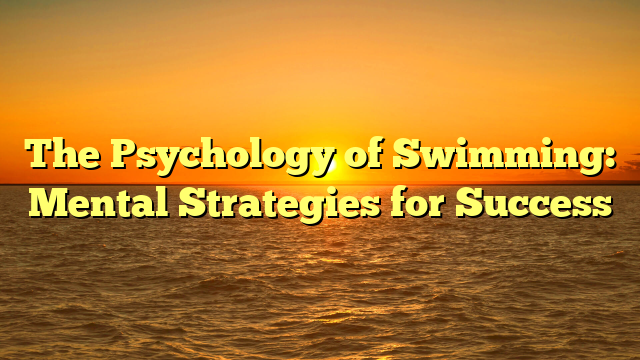
In 1992, Dr. Gary Chapman introduced the concept of *love languages*—a framework that identifies the primary ways in which individuals give and receive love. According to Chapman, understanding these love languages can strengthen relationships by fostering better communication and deeper emotional connections. But what is it about love languages that makes them so impactful? To answer this question, we must explore the science behind them and how they influence our interactions with others.
The Five Love Languages
Chapman’s model categorizes love into five distinct languages: words of affirmation, acts of service, receiving gifts, quality time, and physical touch. Each individual has a primary love language, which means they feel most loved and appreciated when it is expressed in that particular way. Though people may appreciate all love languages to some degree, one tends to stand out as the most significant for each person.
The Role of Attachment Theory
To understand why love languages work, it’s essential to look at the psychology behind emotional attachment. *Attachment theory*, developed by psychologist John Bowlby, suggests that the way we form emotional bonds in early childhood influences how we connect with others in adulthood. People with secure attachments tend to have healthy relationships because they are comfortable with intimacy and trust. In contrast, individuals with insecure attachments may struggle with emotional expression or fear rejection.
Love languages are closely related to attachment theory. For example, individuals who prioritize physical touch may have had caregivers who showed affection through hugs or physical closeness. Similarly, someone who values words of affirmation might have been raised in an environment where verbal praise and positive reinforcement were prevalent. The way we express and receive love often mirrors the patterns we experienced in our formative years, making love languages a deeply ingrained part of our emotional makeup.
Neurological Basis for Love Languages
Research in neuroscience has shown that emotions are processed in specific areas of the brain, such as the limbic system, which is responsible for emotional regulation and bonding. When we experience love in a way that aligns with our primary love language, it triggers the release of “feel-good” chemicals such as oxytocin, dopamine, and serotonin. These neurotransmitters are associated with feelings of happiness, bonding, and trust, all of which are essential for maintaining healthy relationships.
For 4d , when someone whose love language is physical touch receives a hug, the brain releases oxytocin, often referred to as the “bonding hormone.” This creates a sense of closeness and security. Similarly, when a person whose love language is words of affirmation hears a sincere compliment, the brain releases dopamine, enhancing feelings of joy and satisfaction.
Communication and Relationship Satisfaction
Effective communication is the cornerstone of any successful relationship. The science behind love languages reveals that couples who understand and speak each other’s love language are better equipped to meet each other’s emotional needs. When partners speak different love languages but make the effort to understand each other’s preferences, the relationship tends to be more satisfying and resilient.
A study conducted by the *Journal of Social and Personal Relationships* found that couples who communicate effectively and express affection in ways that resonate with each other are more likely to experience higher levels of relationship satisfaction. This is because their emotional needs are being met in a way that feels natural to them. Conversely, when individuals are unable to communicate in their preferred love language, frustration, misunderstandings, and emotional distance can arise.
The Impact of Love Languages on Conflict Resolution
Understanding love languages can also have a profound impact on conflict resolution. Many arguments in relationships stem from unmet emotional needs or miscommunication. For example, a partner who values quality time might feel neglected if their significant other is preoccupied with work or distractions. On the other hand, someone whose love language is acts of service may feel unloved if their partner fails to assist with household tasks.
By recognizing each other’s love languages, partners can proactively address these issues. Rather than blaming or criticizing, they can approach the situation with empathy and understanding. When partners are attuned to each other’s emotional needs, they are more likely to navigate conflicts constructively and with a sense of mutual respect.
The science behind love languages lies in their ability to tap into deeply rooted emotional needs and brain chemistry. Understanding how love languages work can transform relationships by fostering better communication, emotional intimacy, and mutual respect. By identifying and speaking each other’s love languages, couples can create a stronger bond, increase relationship satisfaction, and navigate challenges with empathy and understanding. Ultimately, love languages offer a powerful tool for building deeper, more fulfilling connections with the people who matter most.





